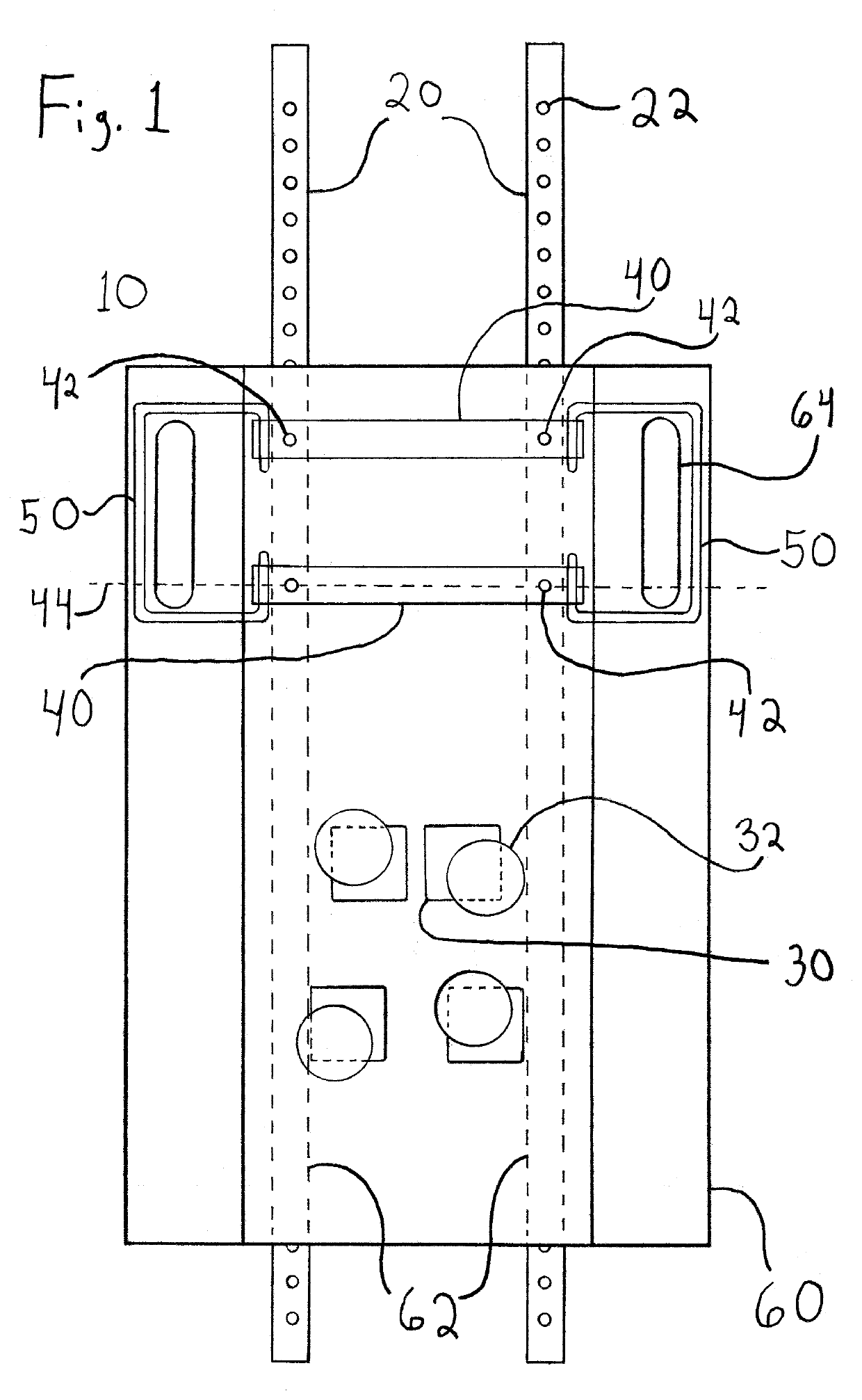Current massage devices fall generally into one of seven categories, and current designs present problems which create difficulties of usage or expense which inhibits broad
usability.
They are typically portable, lightweight and take up little room.
This dramatically limits their usefulness for anyone with reduced strength or flexibility, or those with injuries or other handicaps that affect upper body or hand capabilities.
This limits their usefulness for a large portion of people who most need relief of
muscle tension.
Unfortunately, they are more expensive and difficult to manufacture, and they still suffer from the need for good flexibility and upper body strength to address back or lower neck areas, especially upper back areas.
Additionally, they are typically heavier, requiring good
hand strength.
Due to the required flexibility, upper body strength and
hand strength they are not a good candidate for individuals with injuries or handicaps that affect upper body or
hand strength or flexibility.
Again, this limits their usefulness for those who need them the most.
They also tend to break more easily than their mechanically simpler hand-held counterparts.
Unfortunately, they are almost universally the most expensive option, often by orders of magnitude, placing them financially out of reach of many if not most people.
They are the most complicated thus most likely to break or have serious functional problems.
They are also the least portable, and in the case of those built into a chair, require more than one person to move.
These devices are usually the least adjustable.
And, like the hand-held motorized category, they require a power source, thus limiting their portability and usefulness.
Unfortunately in order to utilize them a user has to get down on the floor, which can be difficult for many people.
Using them can be exhausting, similar to performing
aerobic exercise such as sit-ups or push-ups, again restricting their use to people in decent
physical shape without limiting injuries or handicaps.
This limits their usefulness for many people who need them the most.
There is no real way to adjust pressure used, as it is largely dependent on
body weight, which can make them difficult or impossible to use for heavy or
overweight individuals.
They also require a reasonably clean area on the floor and suitable clothing, restricting when and where they can be used.
Unfortunately these devices are usually extremely limited in range of massage area and function.
The ability to adjust pressure is usually very limited, and like the massage chair and hand-held massage devices, the wearable electrically powered devices suffer from the need for some sort of an electrical power source.
This can be supplied by batteries, in which case massaging strength is limited, as is the time it can be used before the batteries need replaced or recharged.
However, a device powered by standard household
electricity suffers from the same portability issues as the hand-held electrically powered massage devices and powered massage chairs in that you are limited to using them where there is a readily available electrical power source.
Finally, these devices are difficult to use for individuals with more severe hand or arm injuries and disabilities, in that they usually require both hands to effectively attach them to your body and to correctly adjust them to address the desired area.
These individuals would need a second individual to attach them and adjust them for the user, which limits their usefulness.
With the large number of restrictions and the lack of flexibility, these devices fall short of being useful
general purpose massage tools.
These types of devices would seem to have the most promise for being widely
usable and effective, but they appear to be the least developed of the possible options.
Most are simple rollers or balls on ropes or rods that aren't particularly easy to adjust and don't adapt comfortably to various body types or areas.
Current offerings in this category consistently fall short of sufficiently relieving
muscle tension or tightness, let alone being useful for more targeted pressure point work or other tasks desirable with massage tools.
They seem to be primarily limited by the inherent
instability and structural
weakness with the stand.
Furthermore they are rather large and bulky compared with other options, with the exception of massage chairs, limiting the portability of such devices.
The prior art research done is reasonably in depth but is far from exhaustive, as an exhaustive investigation could take years of labor hours.
However, in some cases, the patents cited are not in production or widely available.
All of the cited devices researched and mentioned in Sections - suffer from serious
usability restrictions and limits, excessive cost barriers, unrealistic
physical strength requirements, unrealistic physical capability requirements or a combination of these.
One could argue that the large proliferation of patents regarding massage devices demonstrates that the current offerings are not addressing the primary needs of the users of such devices.
 Login to View More
Login to View More  Login to View More
Login to View More 


